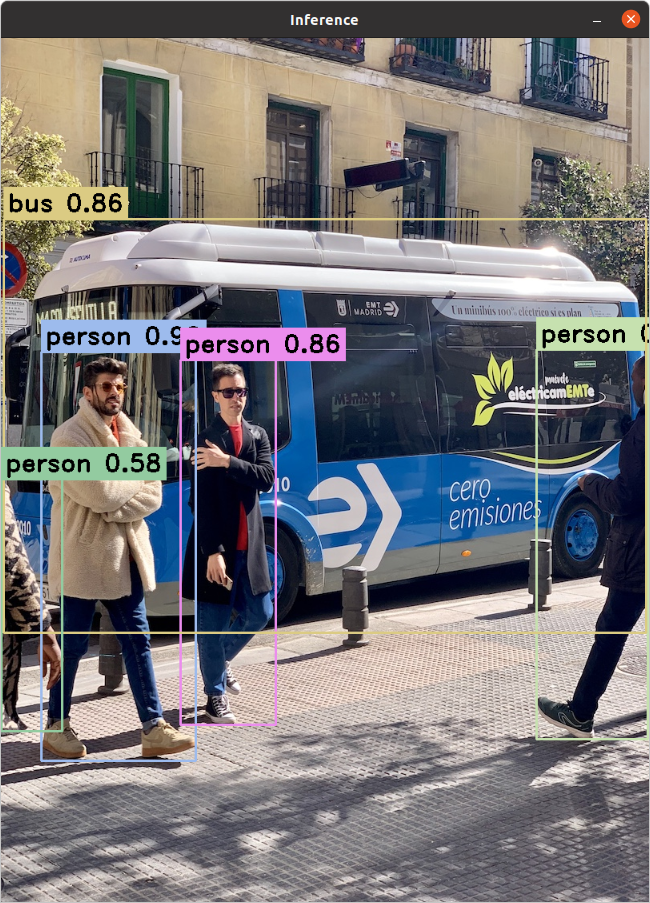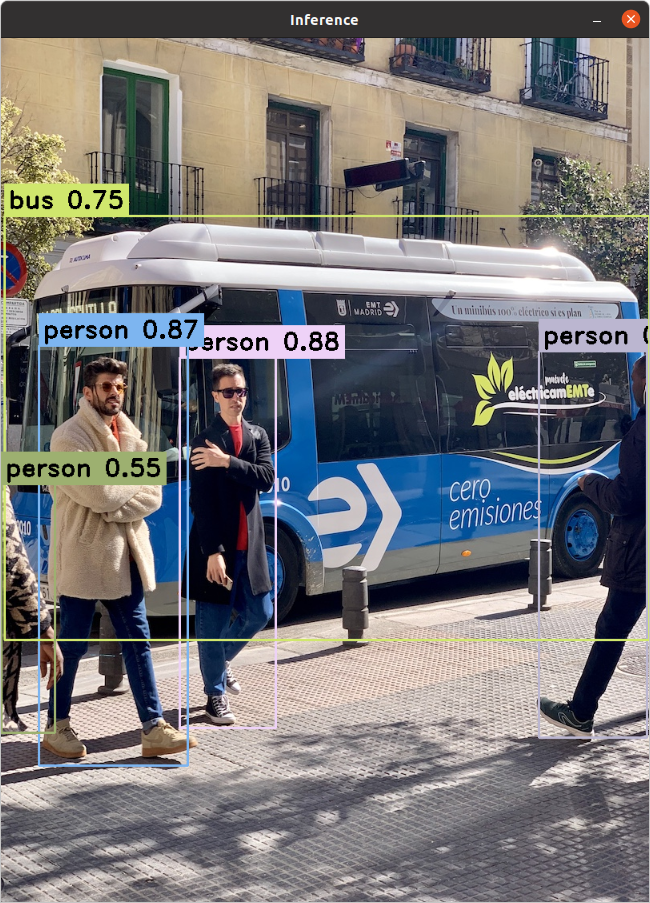Co-authored-by: Glenn Jocher <glenn.jocher@ultralytics.com> |
5 months ago | |
|---|---|---|
| .. | ||
| CMakeLists.txt |
…
|
|
| README.md |
…
|
|
| inference.cpp |
…
|
|
| inference.h |
…
|
|
| main.cpp | Fix YOLOv8 C++ Example model input size (#15665) | 5 months ago |
README.md
YOLOv8/YOLOv5 Inference C++
This example demonstrates how to perform inference using YOLOv8 and YOLOv5 models in C++ with OpenCV's DNN API.
Usage
git clone ultralytics
cd ultralytics
pip install .
cd examples/YOLOv8-CPP-Inference
# Add a **yolov8\_.onnx** and/or **yolov5\_.onnx** model(s) to the ultralytics folder.
# Edit the **main.cpp** to change the **projectBasePath** to match your user.
# Note that by default the CMake file will try to import the CUDA library to be used with the OpenCVs dnn (cuDNN) GPU Inference.
# If your OpenCV build does not use CUDA/cuDNN you can remove that import call and run the example on CPU.
mkdir build
cd build
cmake ..
make
./Yolov8CPPInference
Exporting YOLOv8 and YOLOv5 Models
To export YOLOv8 models:
yolo export model=yolov8s.pt imgsz=480,640 format=onnx opset=12
To export YOLOv5 models:
python3 export.py --weights yolov5s.pt --img 480 640 --include onnx --opset 12
yolov8s.onnx:
yolov5s.onnx:
This repository utilizes OpenCV's DNN API to run ONNX exported models of YOLOv5 and YOLOv8. In theory, it should work for YOLOv6 and YOLOv7 as well, but they have not been tested. Note that the example networks are exported with rectangular (640x480) resolutions, but any exported resolution will work. You may want to use the letterbox approach for square images, depending on your use case.
The main branch version uses Qt as a GUI wrapper. The primary focus here is the Inference class file, which demonstrates how to transpose YOLOv8 models to work as YOLOv5 models.

